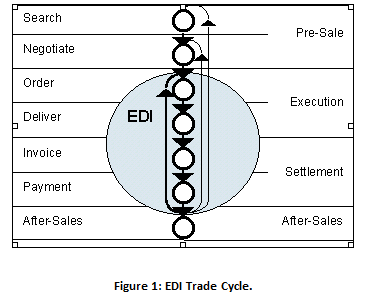
E-commerce Trade Cycle Project For Class 12
Acknowledgement:
I would like to take this opportunity to express my sincere gratitude to the individuals who have contributed to the successful completion of this E-commerce Trade Cycle Project. Their unwavering support, guidance, and encouragement have been invaluable throughout this endeavor.
First and foremost, I extend my heartfelt thanks to my respected teachers for their insightful instruction and continuous encouragement. Their expertise and dedication have played a pivotal role in shaping my understanding of the subject matter and providing me with the necessary tools to undertake this project.
I would also like to extend my appreciation to my parents, whose unwavering support and encouragement have been a constant source of motivation. Their belief in my abilities has inspired me to strive for excellence in all aspects of this project.
Furthermore, I am indebted to the numerous online resources, books, and research materials that have enriched my understanding of the e-commerce trade cycle. These sources have provided me with a comprehensive foundation upon which to build my research and analysis.
I am also grateful to my classmates and friends who have engaged in thoughtful discussions and brainstorming sessions, contributing to the development of new ideas and perspectives.
Last but not least, I extend my sincere thanks to any individuals who generously shared their insights and experiences during the course of this project. Your willingness to impart your knowledge has been instrumental in broadening my horizons and enhancing the quality of this work.
In conclusion, this project would not have been possible without the collective efforts of the aforementioned individuals. Your support has truly made a difference, and I am deeply appreciative of your contributions.
Thank you.
[Your Name]Introduction:
In an era characterized by rapid technological advancement, the landscape of commerce has undergone a profound transformation. The emergence of e-commerce, or electronic commerce, stands as a testament to the power of the digital age in shaping the way businesses operate and consumers engage with products and services. E-commerce, in its essence, refers to the buying and selling of goods and services over the internet, transcending geographical boundaries and redefining traditional market dynamics.
The significance of e-commerce in today’s digital world cannot be overstated. With the internet serving as a global marketplace, businesses now have the unprecedented opportunity to reach a vast and diverse audience, transcending physical limitations and time zones. Consumers, in turn, enjoy the convenience of browsing, comparing, and purchasing products with just a few clicks, all from the comfort of their homes. This paradigm shift has not only revolutionized the way business transactions are conducted but has also ushered in a new era of consumer empowerment and choice.
Against this backdrop, the focal point of this project is to delve into the intricate framework that underpins the success of e-commerce ventures – the e-commerce trade cycle. This trade cycle constitutes a series of interdependent stages, each playing a vital role in the overall journey of an online business, from inception to customer satisfaction. It is within the confines of this trade cycle that the gears of e-commerce turn, orchestrating a symphony of activities that ultimately determine the fate of an online enterprise.
The primary objective of this project is to unravel the intricacies of the e-commerce trade cycle, shedding light on each distinct stage and unraveling its significance within the larger context. By dissecting the cycle into its constituent components, we aim to provide a comprehensive understanding of the mechanisms that drive successful e-commerce operations. Through a systematic exploration, we intend to highlight the pivotal role that the e-commerce trade cycle plays in shaping the trajectory of an online business, fostering growth, customer loyalty, and operational efficiency.
In the subsequent sections of this project, we will embark on a journey through the various stages of the e-commerce trade cycle. From the initial steps of product sourcing and creation to the culmination of customer feedback and support, each phase contributes to a holistic and dynamic cycle that serves as the backbone of e-commerce success. Through insightful examples and analyses, we will unveil the intricate dance of strategies, technologies, and human interactions that transpire behind the digital façade of online shopping.
In conclusion, the e-commerce trade cycle stands as a testament to the symbiotic relationship between innovation and consumer behavior. As we navigate through the chapters of this project, it is our hope that you will gain a comprehensive appreciation for the multifaceted nature of e-commerce, and the vital role that each stage of the trade cycle plays in shaping the destiny of online businesses. So, let us embark on this enlightening journey to uncover the mechanics of e-commerce success and explore the synergy between digital entrepreneurship and the modern consumer landscape.
E-commerce Trade Cycle Explained:
The e-commerce trade cycle refers to the systematic sequence of steps that an online business undertakes to operate successfully within the digital marketplace. It encompasses a series of stages, each playing a pivotal role in steering the business from its inception to its sustainable growth. This trade cycle is the backbone of any e-commerce venture, guiding it through the intricacies of product sourcing, customer engagement, sales, and beyond.
Importance of the E-commerce Trade Cycle for Online Businesses:
Understanding the significance of the e-commerce trade cycle is paramount for online businesses aiming to thrive in today’s dynamic digital landscape. Each stage of the cycle contributes to the holistic development and success of the e-commerce venture, making it more than just a sum of its parts.
Product Sourcing and Creation:
The foundation of the trade cycle lies in the selection and creation of products. Thorough market research and analysis are essential to identify products that resonate with the target audience. The quality, relevance, and uniqueness of these products are vital factors that attract potential customers and lay the groundwork for long-term success.
Online Store Setup:
Creating an appealing and user-friendly online store is akin to designing a welcoming physical storefront. A well-structured and visually engaging interface ensures a positive first impression, encouraging visitors to explore further. A seamless and intuitive navigation system simplifies the browsing and purchasing process, enhancing user experience.
Marketing and Promotion:
Effective marketing strategies are the driving force behind attracting customers to the online store. From social media campaigns to search engine optimization, these efforts increase brand visibility and drive traffic. Properly executed marketing initiatives generate interest, making potential customers aware of the products and services offered.
Customer Engagement and Sales:
Engaging customers on a personal level is the heart of the trade cycle. Tailored experiences, personalized recommendations, and strategic incentives establish a connection that goes beyond transactions. Positive interactions during this stage enhance customer loyalty, drive conversions, and foster repeat business.
Order Fulfillment and Delivery:
Efficient order processing and reliable delivery mechanisms are essential for customer satisfaction. Timely fulfillment, accurate shipping, and effective communication regarding order status build trust. Satisfied customers are more likely to become advocates for the brand, resulting in enhanced reputation and customer retention.
Customer Feedback and Support:
Engaging with customers post-purchase is crucial for continuous improvement. Actively seeking feedback, addressing concerns, and providing exceptional support solidify the brand-customer relationship. Customer insights obtained during this stage guide refinements to products, services, and strategies, creating a feedback loop that drives growth.

Stages of the E-commerce Trade Cycle:
– Stage 1: Product Sourcing and Creation:
Discuss how online businesses source or create their products. Highlight the importance of choosing the right products to sell based on market trends and customer demand.
– Stage 2: Online Store Setup:
Explain the process of setting up an online store, including choosing an e-commerce platform, designing the website, and ensuring user-friendly navigation.
– Stage 3: Marketing and Promotion:
Describe various digital marketing strategies such as social media marketing, search engine optimization (SEO), and pay-per-click (PPC) advertising. Discuss how these strategies attract potential customers to the online store.
– Stage 4: Customer Engagement and Sales:
Explore how online businesses engage with customers through personalized experiences, product recommendations, and discounts. Highlight the significance of a seamless checkout process.
– Stage 5: Order Fulfillment and Delivery:
Explain the logistics of order processing, packaging, and delivery. Discuss the importance of efficient supply chain management to ensure timely delivery and customer satisfaction.
– Stage 6: Customer Feedback and Support:
Discuss the role of customer reviews and feedback in building trust. Explain how excellent customer support contributes to customer loyalty and repeat business.

Example: Successful E-commerce Trade Cycle Implementation:
To illustrate the effectiveness of the e-commerce trade cycle, let’s delve into the success story of “GlamHub, ” a fictional online cosmetics and beauty products retailer. GlamHub’s journey exemplifies a well-executed e-commerce trade cycle that propelled the business to remarkable heights.
Stage 1: Product Sourcing and Creation:
GlamHub recognized the burgeoning demand for high-quality, cruelty-free cosmetics. Through thorough market research, they identified gaps in the market for premium yet affordable beauty products that catered to environmentally conscious consumers. They collaborated with reputable suppliers who shared their values, ensuring a steady supply of products aligned with their brand ethos.
Stage 2: Online Store Setup:
GlamHub’s online store was a testament to user-centric design. The website featured an elegant and intuitive layout that allowed customers to browse categories seamlessly. Product pages were rich in detail, providing comprehensive information and high-resolution images. The checkout process was streamlined, with multiple secure payment options, reducing cart abandonment rates.
Stage 3: Marketing and Promotion:
GlamHub’s marketing strategy was a blend of social media prowess and influencer partnerships. They engaged beauty influencers with a strong online presence to review and showcase their products. Social media platforms were leveraged for engaging content, tutorials, and giveaways, creating a buzz around their brand. Search engine optimization strategies ensured high visibility in search engine results.
Stage 4: Customer Engagement and Sales:
GlamHub’s commitment to personalized customer engagement set them apart. They implemented an AI-driven chatbot that provided instant responses to customer inquiries. The chatbot also offered product recommendations based on individual preferences and previous purchases, leading to increased average order values and customer satisfaction.
Stage 5: Order Fulfillment and Delivery
Efficient logistics were crucial to GlamHub’s success. They partnered with a reliable fulfillment center that enabled quick order processing, accurate packaging, and timely delivery. Real-time tracking and order status updates kept customers informed, fostering trust and repeat business.
Stage 6: Customer Feedback and Support:
GlamHub placed a premium on customer feedback. They actively solicited reviews, ratings, and testimonials from buyers, displaying them prominently on their website. Negative feedback was promptly addressed, showcasing their commitment to continuous improvement. Their dedicated customer support team provided assistance via various channels, ensuring that customer concerns were resolved promptly and effectively.
Result:
GlamHub’s diligent execution of the e-commerce trade cycle bore fruit. Their customer-centric approach, coupled with meticulous attention to each stage, led to remarkable success. Within a short span, GlamHub established itself as a reputable brand in the cosmetics industry, garnering a loyal customer base and achieving substantial revenue growth. Their effective implementation of the e-commerce trade cycle showcases the transformative power of strategic planning, customer engagement, and operational excellence in the realm of online businesses.

Importance of E-commerce Trade Cycle Project:
Understanding the e-commerce trade cycle holds immense educational and practical significance, particularly in today’s digital-centric world. This knowledge transcends theoretical concepts, offering a comprehensive view of the intricate mechanisms that drive online businesses. The e-commerce trade cycle project equips students with invaluable insights that bridge the gap between classroom learning and real-world application.
Educational Significance:
Holistic Understanding: Studying the e-commerce trade cycle provides students with a holistic understanding of how an online business functions. It exposes them to a multifaceted ecosystem, encompassing product development, marketing, sales, customer engagement, and post-sales support.
Interdisciplinary Learning: The trade cycle integrates various disciplines such as marketing, operations, logistics, and customer relationship management. Students learn how these components interact and contribute to the overall success of an e-commerce venture.
Applied Knowledge: The project encourages students to apply theoretical concepts to practical scenarios. They develop problem-solving skills by analyzing real-world challenges that businesses face during each stage of the trade cycle.
Practical Significance:
Entrepreneurial Preparation: Understanding the e-commerce trade cycle is vital for aspiring entrepreneurs. It equips them with the skills to conceptualize, launch, and manage their own online businesses. They learn to navigate challenges and make informed decisions at each stage, enhancing their chances of success.
E-commerce Careers: In a rapidly evolving job market, e-commerce expertise is in high demand. Students equipped with trade cycle knowledge are well-positioned for careers in digital marketing, e-commerce management, supply chain coordination, customer experience enhancement, and more.
Strategic Decision-Making: Successful e-commerce businesses require strategic decision-making. By comprehending the trade cycle, students gain insights into crafting effective business strategies, optimizing product offerings, and devising marketing campaigns that resonate with target audiences.
Customer-Centric Approach: E-commerce revolves around customer satisfaction. Understanding the trade cycle empowers students to create customer-centric experiences, fostering brand loyalty and repeat business.
Adaptability to Technological Trends: E-commerce is intertwined with technological innovations. Knowledge of the trade cycle enables students to stay updated with emerging technologies, adapt to changing consumer behaviors, and leverage digital advancements.
Preparation for the Future:
In an era where e-commerce is reshaping traditional business models, studying the trade cycle equips students with a skill set that transcends industries. It fosters adaptability, innovation, and a keen understanding of consumer dynamics – qualities essential for thriving in the digital age.
By immersing themselves in the complexities of the e-commerce trade cycle, students not only enhance their academic learning but also prepare themselves for dynamic and rewarding careers in e-commerce or entrepreneurship. This project, therefore, serves as a gateway to bridging theory and practice, fostering a new generation of digitally savvy and business-minded individuals.
Conclusion:
In the intricate tapestry of the digital age, the e-commerce trade cycle stands as the master weaver, crafting the threads that bind together the success of online businesses. Throughout this project, we embarked on a journey through the various stages of this cycle, unraveling the intricate dance of strategies, technologies, and customer interactions that underlie the triumph of e-commerce ventures. As we conclude our exploration, let us recapitulate the key insights and highlights that underscore the pivotal role of the e-commerce trade cycle in the realm of online commerce.
The e-commerce trade cycle is not merely a linear progression; it is an interconnected symphony, where each stage harmoniously complements the other, forming the backbone of operational excellence. We witnessed how the cycle’s first stage, Product Sourcing and Creation, lays the foundation by selecting or creating products that resonate with consumer needs and desires. This stage serves as the catalyst, igniting the journey towards customer engagement and loyalty.
Moving forward, the stage of Online Store Setup demonstrated the significance of creating an inviting digital space that encapsulates the brand’s essence. A well-designed online storefront serves as the gateway for potential customers, beckoning them into an immersive shopping experience that seamlessly guides them through products and services.
Our exploration then delved into the realm of Marketing and Promotion, where strategic campaigns and digital maneuvers captivate the attention of a global audience. This stage elucidates the importance of visibility, a cornerstone for attracting visitors to the online store and converting them into loyal patrons.
At the heart of the trade cycle, we uncovered the essence of Customer Engagement and Sales, where personalized interactions transcend transactions, fostering connections that transcend the digital divide. Satisfied customers are the lifeblood of any business, and this stage showcases how genuine engagement propels brand loyalty and advocacy.
The gears of the trade cycle continue to turn, propelling us to the crucial stage of Order Fulfillment and Delivery. Efficient logistics and transparent communication solidify trust, transforming customers into brand ambassadors through their seamless experiences.
Finally, we arrived at the stage of Customer Feedback and Support, where a continuous feedback loop fuels innovation and evolution. By actively seeking and addressing customer input, businesses refine their offerings and reinforce customer relationships.
In conclusion, the e-commerce trade cycle is the beating heart of online businesses, a dynamic and interdependent journey that weaves together every strand of an enterprise’s fabric. The success of an e-commerce venture is not a solitary achievement; it is the culmination of synchronized efforts that span from product inception to customer satisfaction. The trade cycle serves as a guiding compass, propelling businesses towards growth, sustainability, and customer-centric excellence.
As you embark on your journey to complete this class 12 project, remember that thorough research, relevant examples, and clear communication are your guiding lights. This project serves as a testament to your understanding of the e-commerce landscape, showcasing your ability to navigate its complexities and appreciate the synergy between each stage. Armed with this knowledge, you are well-prepared to make your mark in the world of e-commerce, whether as an entrepreneur, a digital marketer, or a strategic thinker.
Certificate of Completion
(Your Name)
[Name of Your School]State, city, and zip code
[Date]
This Certificate of Achievement is being presented to me, [Your Name], in recognition of my successful completion of the Class 12 project titled “E-commerce Trade Cycle: A Comprehensive Study.”
Through persistent effort and a love of learning, I have succeeded in:
- enhanced my grasp of the trade cycle in e-commerce.
- mastered cross-disciplinary abilities in customer relationship management, operations, marketing, and logistics.
- enhanced problem-solving skills by applying academic knowledge to practical situations.
- I geared up for any upcoming entrepreneurial endeavours.
- I prepared myself for a bright future in the e-commerce sector.
- acquired the capacity for making smart decisions.
- developed an e-commerce strategy that is focused on the customer.
- adaptation to new technology developments was shown.
My dedication to academic brilliance and my readiness to succeed in the rapidly changing world of e-commerce are both attested to by this certificate.
I’d want to express my gratitude to [Your School Name], my instructors, and my mentors for their support and advice throughout this academic journey.
Sincerely,
(Your Name)
In order to download the PDF, You must follow on Youtube. Once done, Click on Submit
Follow On YoutubeSubscribed? Click on Confirm
Download E-commerce Trade Cycle Project For Class 12 PDF






